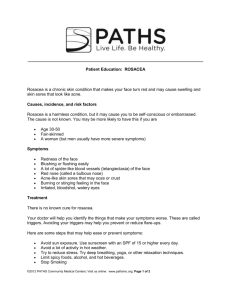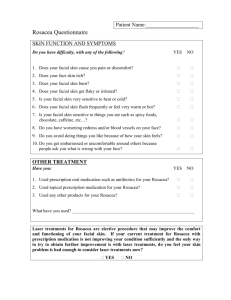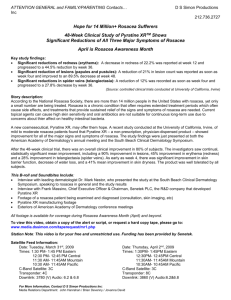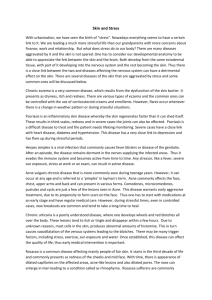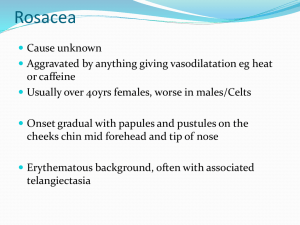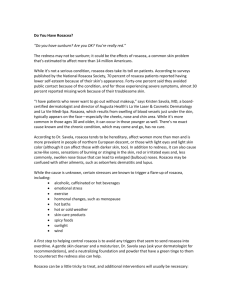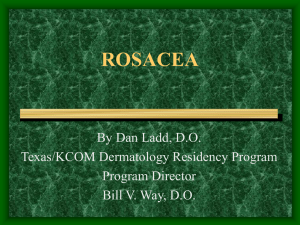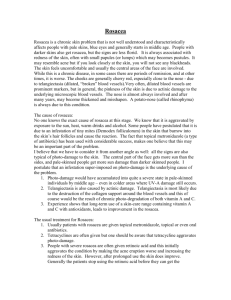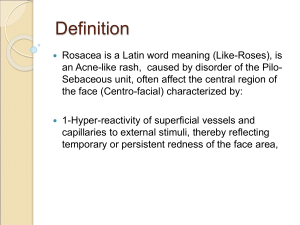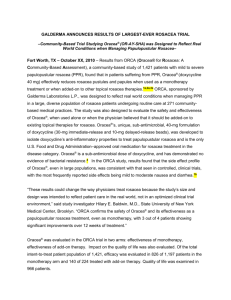Rosacea
advertisement
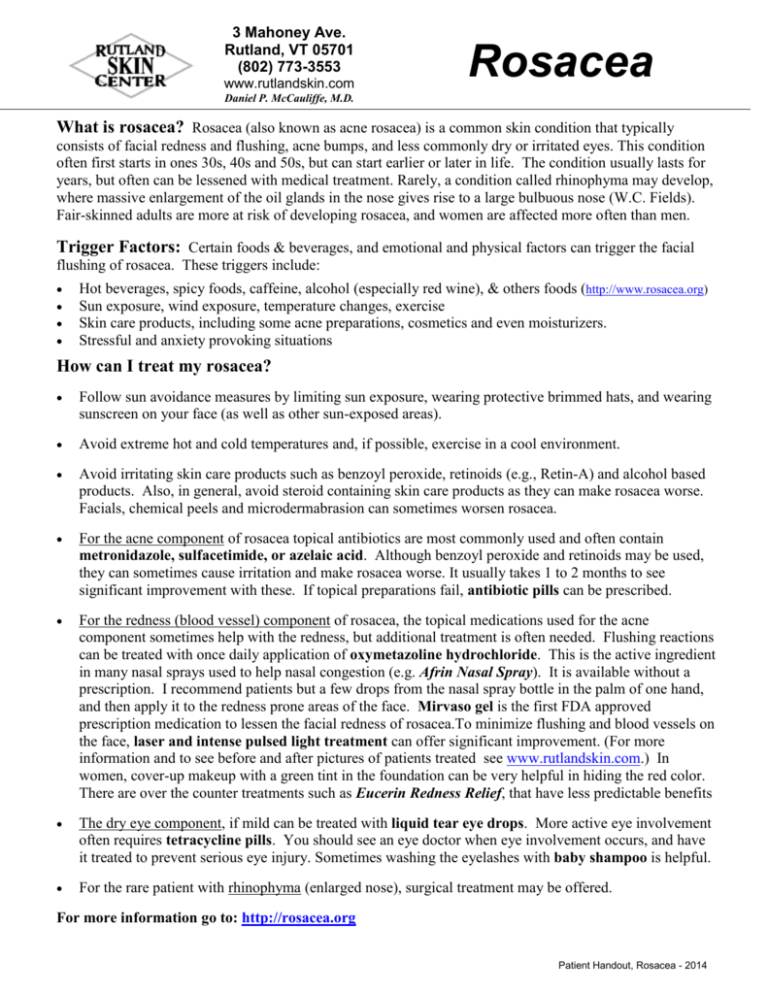
3 Mahoney Ave. Rutland, VT 05701 (802) 773-3553 www.rutlandskin.com Rosacea Daniel P. McCauliffe, M.D. What is rosacea? Rosacea (also known as acne rosacea) is a common skin condition that typically consists of facial redness and flushing, acne bumps, and less commonly dry or irritated eyes. This condition often first starts in ones 30s, 40s and 50s, but can start earlier or later in life. The condition usually lasts for years, but often can be lessened with medical treatment. Rarely, a condition called rhinophyma may develop, where massive enlargement of the oil glands in the nose gives rise to a large bulbuous nose (W.C. Fields). Fair-skinned adults are more at risk of developing rosacea, and women are affected more often than men. Trigger Factors: Certain foods & beverages, and emotional and physical factors can trigger the facial flushing of rosacea. These triggers include: Hot beverages, spicy foods, caffeine, alcohol (especially red wine), & others foods (http://www.rosacea.org) Sun exposure, wind exposure, temperature changes, exercise Skin care products, including some acne preparations, cosmetics and even moisturizers. Stressful and anxiety provoking situations How can I treat my rosacea? Follow sun avoidance measures by limiting sun exposure, wearing protective brimmed hats, and wearing sunscreen on your face (as well as other sun-exposed areas). Avoid extreme hot and cold temperatures and, if possible, exercise in a cool environment. Avoid irritating skin care products such as benzoyl peroxide, retinoids (e.g., Retin-A) and alcohol based products. Also, in general, avoid steroid containing skin care products as they can make rosacea worse. Facials, chemical peels and microdermabrasion can sometimes worsen rosacea. For the acne component of rosacea topical antibiotics are most commonly used and often contain metronidazole, sulfacetimide, or azelaic acid. Although benzoyl peroxide and retinoids may be used, they can sometimes cause irritation and make rosacea worse. It usually takes 1 to 2 months to see significant improvement with these. If topical preparations fail, antibiotic pills can be prescribed. For the redness (blood vessel) component of rosacea, the topical medications used for the acne component sometimes help with the redness, but additional treatment is often needed. Flushing reactions can be treated with once daily application of oxymetazoline hydrochloride. This is the active ingredient in many nasal sprays used to help nasal congestion (e.g. Afrin Nasal Spray). It is available without a prescription. I recommend patients but a few drops from the nasal spray bottle in the palm of one hand, and then apply it to the redness prone areas of the face. Mirvaso gel is the first FDA approved prescription medication to lessen the facial redness of rosacea.To minimize flushing and blood vessels on the face, laser and intense pulsed light treatment can offer significant improvement. (For more information and to see before and after pictures of patients treated see www.rutlandskin.com.) In women, cover-up makeup with a green tint in the foundation can be very helpful in hiding the red color. There are over the counter treatments such as Eucerin Redness Relief, that have less predictable benefits The dry eye component, if mild can be treated with liquid tear eye drops. More active eye involvement often requires tetracycline pills. You should see an eye doctor when eye involvement occurs, and have it treated to prevent serious eye injury. Sometimes washing the eyelashes with baby shampoo is helpful. For the rare patient with rhinophyma (enlarged nose), surgical treatment may be offered. For more information go to: http://rosacea.org Patient Handout, Rosacea - 2014
